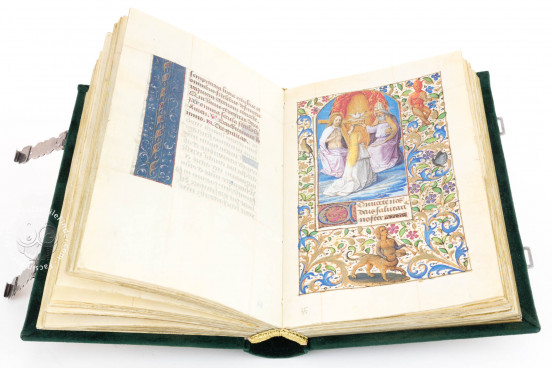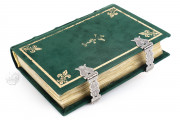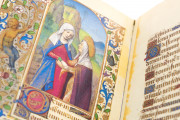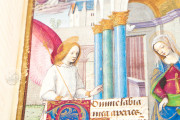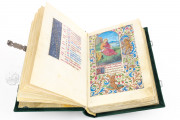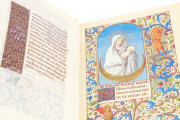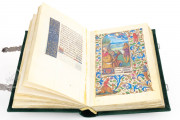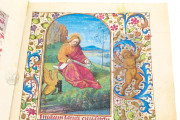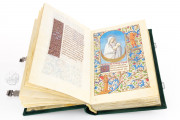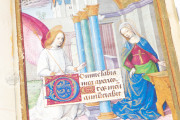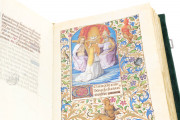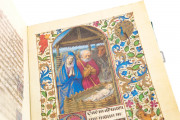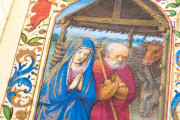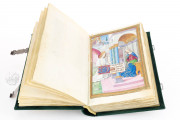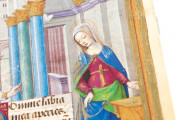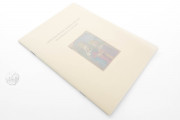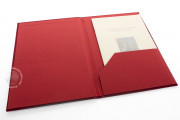The Hours of Barbara d'Austria is one of the most impressive Gothic manuscripts from France. The codex, also known as Offiziolo di Barbara d'Austria, was written and illuminated in the early years of the sixteenth century and features many beautifully illuminated full-page miniatures, three historiated initials, 332 decorated initials, and fourteen illustrated initials.
The Hours of Barbara d'Austria: a Variety of Techniques
The iconographic apparatus exhibits several techniques ranging from tempera to watercolor, where pastel colors such as light blue, pink, purple, violet, yellow, and green are predominant. The use of refined pigments is a testament to the iconographic effort as well as the economical one.
The tables and the historiated initials can be traced back to one master, who probably also supervised the execution of the external borders featuring gold and silver geometric patterns on polychrome backdrops.
Influence of Lombard Art, Jean Bourdichon, and Jean Fouquet
In the zoo-phytomorphic borders, the stylistic register appears to change leading to believe that, especially in the representation of semi-human figures, it was the work of a different hand. The master of the Hours of Barbara d'Austria betrays some inspiration from artists like Jean Bourdichon and Jean Fouquet, however, the artist in question seems to have spent some time in the Italian workshops as pointed out by the use of perspective and architecture typical of Lombard miniaturists.
Powerful Recipients
Although the commissioner remains unknown a few suggestions have been offered as to who was the recipient of such an outstanding manuscript. The majority of scholars agrees that there were in fact two recipients, one being Philip I of Habsburg, King of Castile, also known as Philip the Handsome, and his son Charles, known as Holy Roman Emperor Charles V.
An Exquisite Example of Lettre Bourguignone
The Hours of Barbara d'Austria exhibits a splendid example of lettre batarde, also known as lettre bourguignone, so named as it developed in the court of the duchy of Burgundy. This script, developed from the French chancery cursive, is usually slanted toward the right and featuring contrast between thin and thick strokes. This example seems to have been written by only one scribe.
Life of the Offiziolo of Barbara d'Austria
The manuscript's calendar allows a precise dating, namely the year 1502, four years before the death of Philip. Given its shelfmark, the codex was one of the earliest to become part of the Este library collection, probably as dowry of Barbara d'Austria (1539-1572), second wife of Alfonso d'Este (1533-1597).
Binding description
Binding
The Offiziolo of Barbara d’Austria exhibits a remarkable binding featuring a green velvet binding, which has been suggested to be of German provenance but the presence of golden fleur-de-lis would suggest a larger area of attribution.
We have 1 facsimile edition of the manuscript "Hours of Barbara of Austria": Offiziolo di Barbara d'Austria facsimile edition, published by Imago, 2019
Request Info / Price
